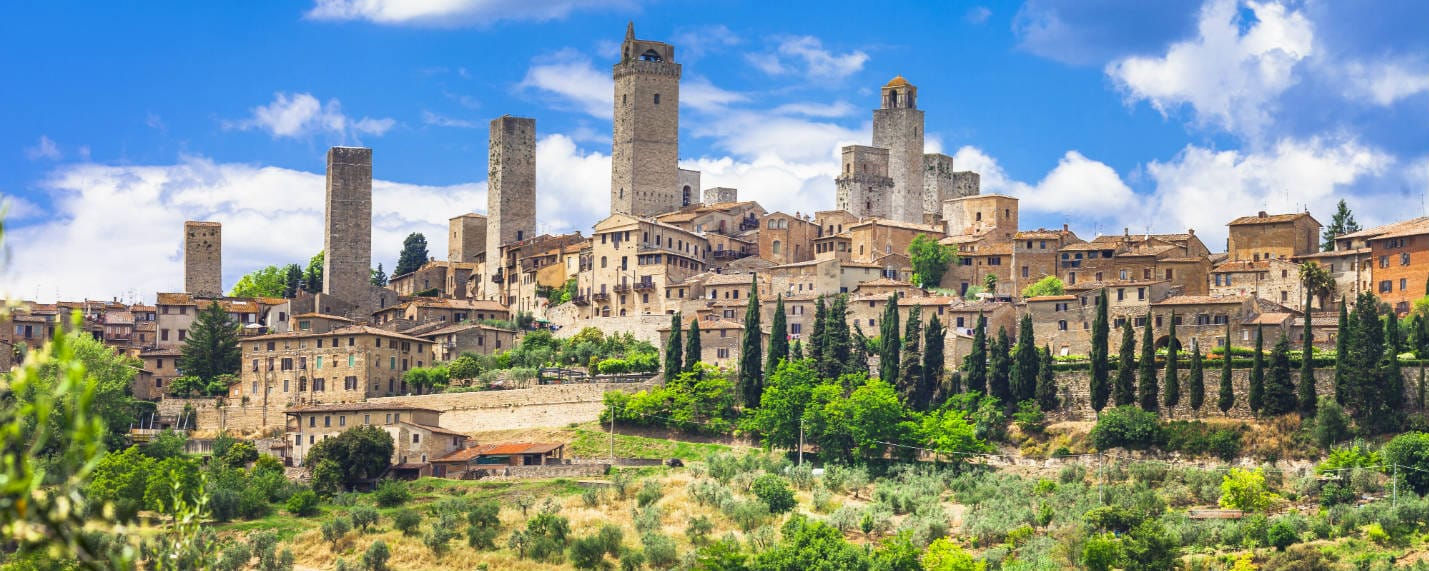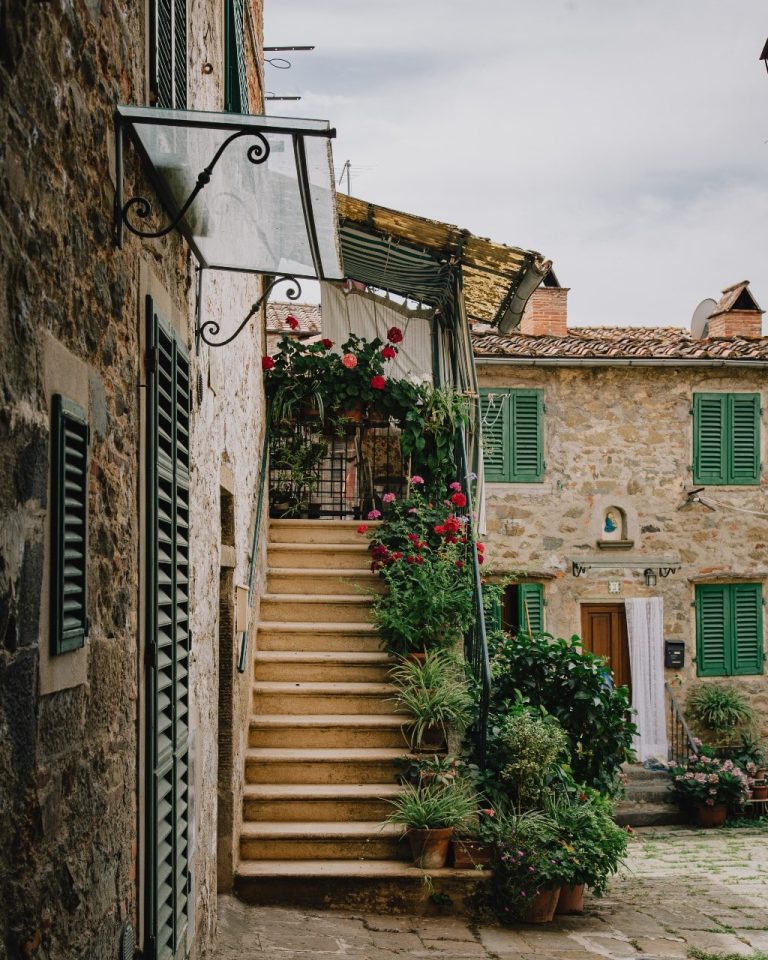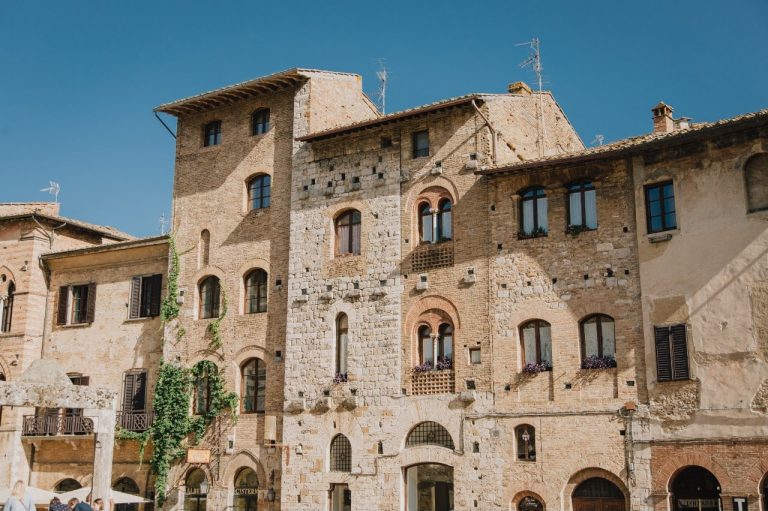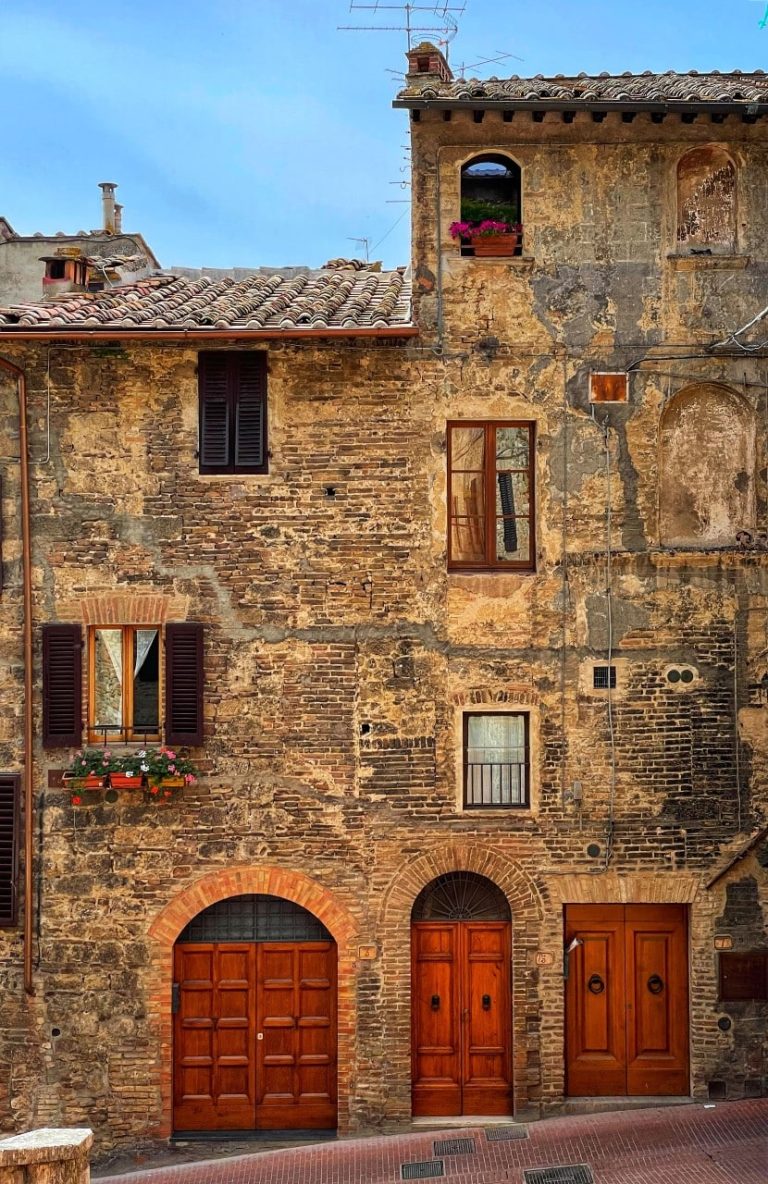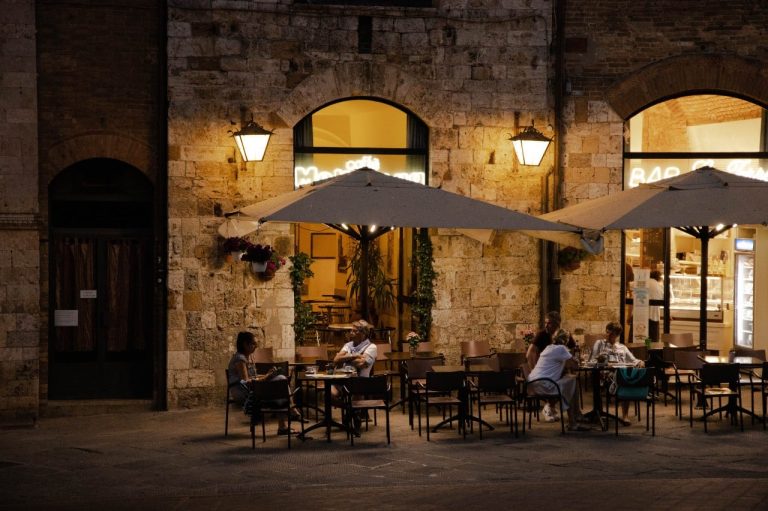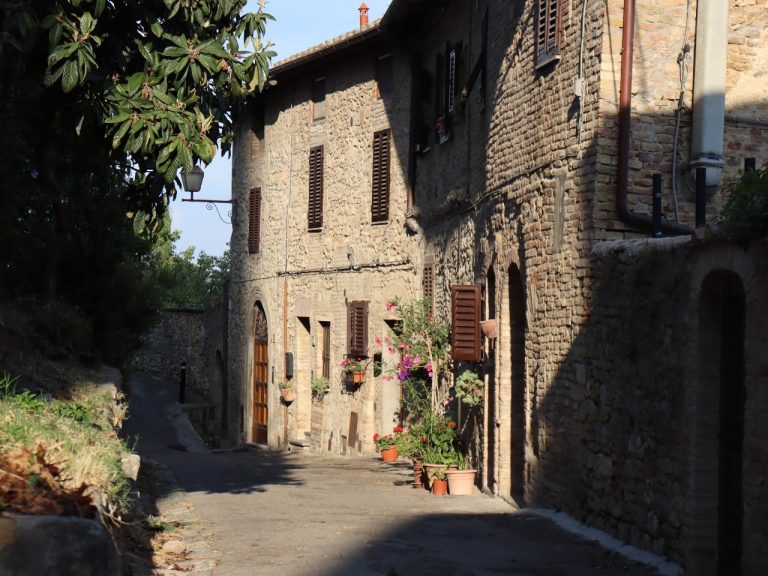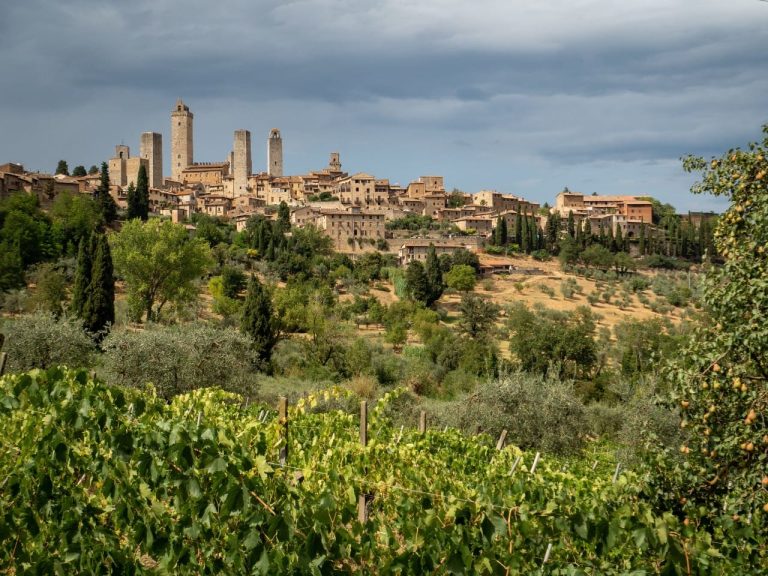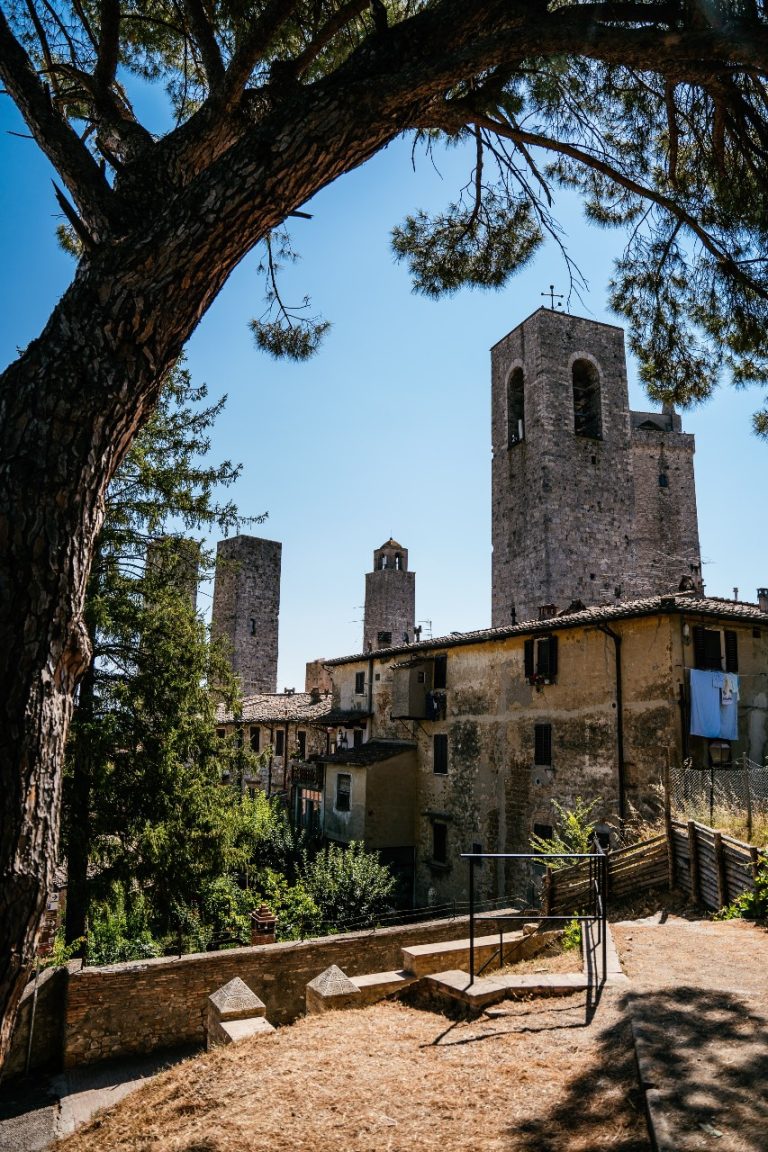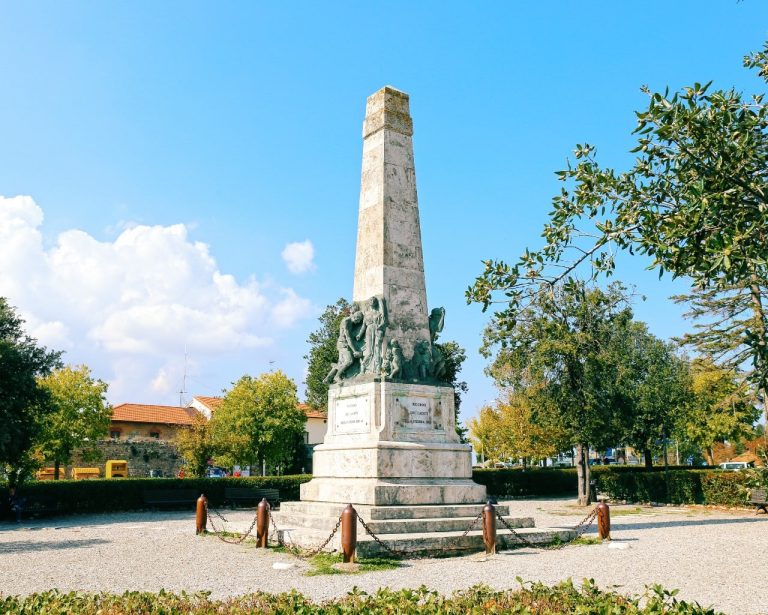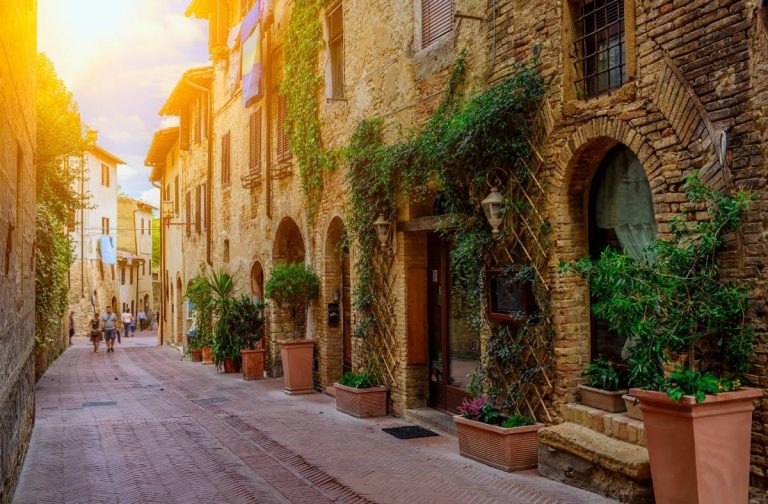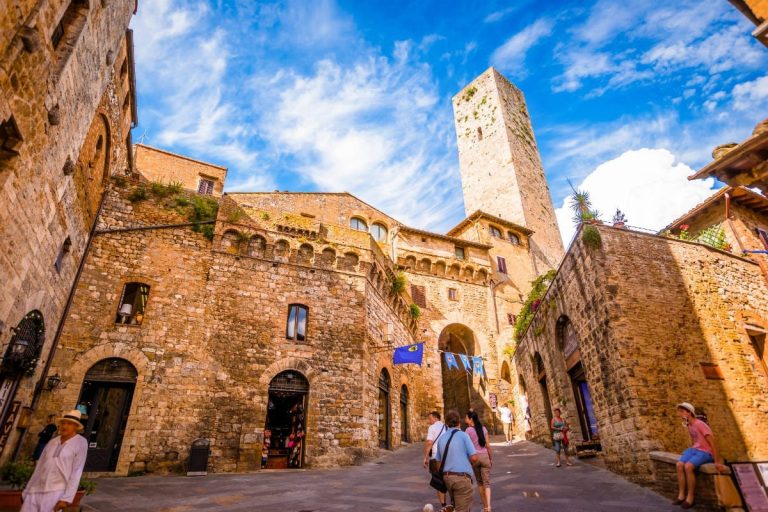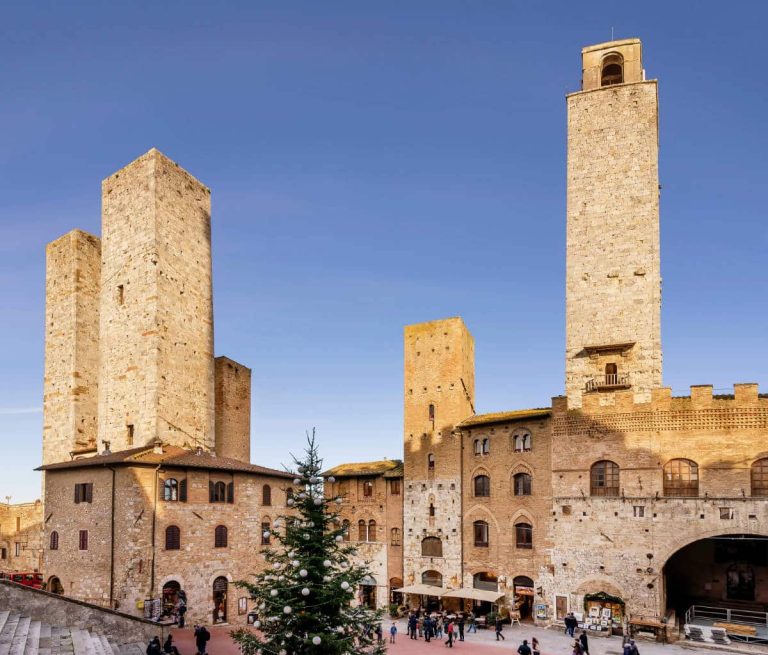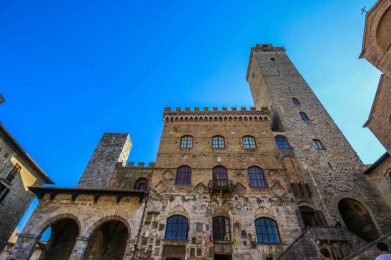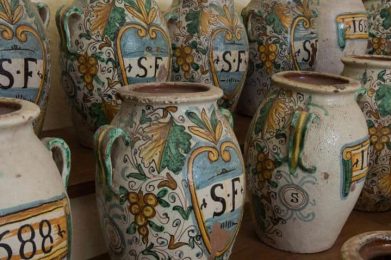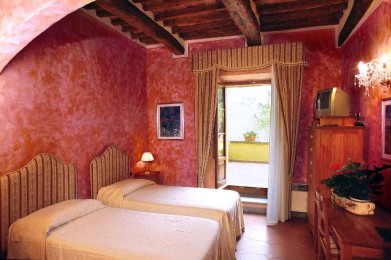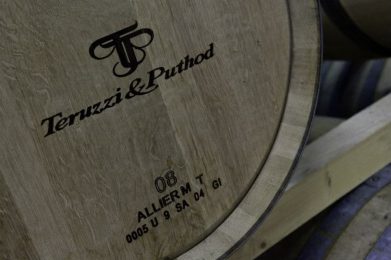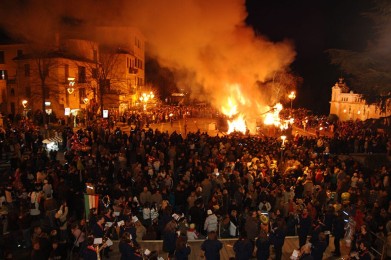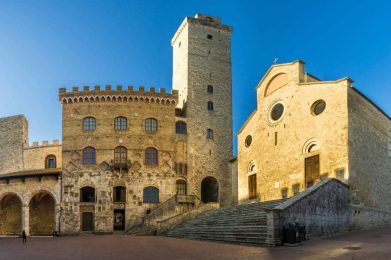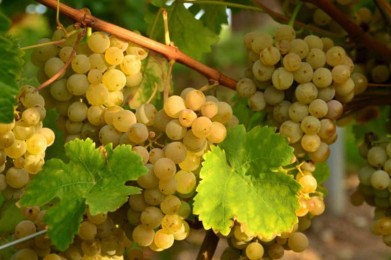The village of San Gimignano, located on a high hill in the Val d'Elsa, is a small fortified town halfway between Florence and Siena.
Known above all for the medieval towers that stand out on its panorama, San Gimignano has acquired the nickname of Manhattan of the Middle Ages. The oldest is the Torre Rognosa, which is 51 meters high, while the highest is the Torre del Podestà, also called Torre Grossa, 54 meters.
San Gimignano is a farming town famous for its Vernaccia wine production and saffron cultivation, which with its characteristic, pungent and slightly bitter taste can be combined with fish, vegetables and white meats.
The Vernaccia di San Gimignano is one of the finest white wines, is produced in a small area of Tuscany between Siena, Pisa and Florence coinciding with the municipal territory of San Gimignano.
It is well known and appreciated throughout the world and was the first Italian wine to receive the mark of Denomination of Controlled Origin (DOC) in 1966.
Tuscany is a region where 15 types of prized honey are produced, all of excellent quality and in San Gimignano it is produced mainly that of acacia and millefiori. In the kitchen, in addition to the combinations with cheeses, honey is excellent for the preparation of desserts.
History
San Gimignano was formerly inhabited by the Etruscans, at least from the 3rd century BC, due to its strategic position.
On the slopes of the hill of the town (624 m a.s.l.) there are the ruins of Castelvecchio, a village of Longobard age.
In the Middle Ages the town was located on one of the routes of the via Francigena, that Sigerico, Archbishop of Canterbury, travelled between the 990 and the 994 and that for him represented the nineteenth stage (mansio) of his return journey from Rome to England.
Sigerico nominated Sce Gemiane, indicating the village also as the point of intersection with the road between Pisa and Siena. According to tradition the name derived from the holy Bishop of Modena, that would have defended the village from the employment of Attila.
Toward 1150, despite the opening of a new route of the Via Francigena, San Gimignano continued to be an emerging center, with a policy of territorial expansion and a significant growth of commercial activities.
It was in this period that formed two "villages" outside the city walls: that of San Matteo, toward Pisa, and that of San Giovanni, toward Siena, both along a new "via maestra", which were incorporated into the walls with the new route completed in 1214.
In 1199, in the full of its economic splendour, the country gained its independence hall with respect to the Bishops of Volterra. Were not lacking the internal conflicts between Guelphs and Ghibellines, but to the XIII century, under the Ghibellines, dates back to the period of greatest splendour economic, which relied on trade of precious agricultural products local, among which the most sought was saffron, sold in Italy and abroad.
In 1251 the walls inglobarono Montestaffoli, but a few years later, in 1255, the city was taken by the Guelphs of Florence that ordered the destruction of the walls. Regained independence in 1261 and returned the supremacy ghibellina after the battle of Montaperti, sangimignanesi rebuilt the walls comprising also the poggio della Torre.
Since then the conformation town was divided into four districts, each corresponding to a master port: that of Piazza, Castle, San Matteo and San Giovanni. In 1251 the walls inglobarono Montestaffoli, but a few years later, in 1255, the city was taken by the Guelphs of Florence that ordered the destruction of the walls.
Regained independence in 1261 and returned the supremacy ghibellina after the battle of Montaperti, sangimignanesi rebuilt the walls comprising also the poggio della Torre. Since then the conformation town was divided into four districts, each corresponding to a master port: that of Piazza, Castle, San Matteo and San Giovanni.
The decline and the marginalization of the city in the subsequent centuries were the conditions that allowed the extraordinary crystallization of its medieval appearance.

